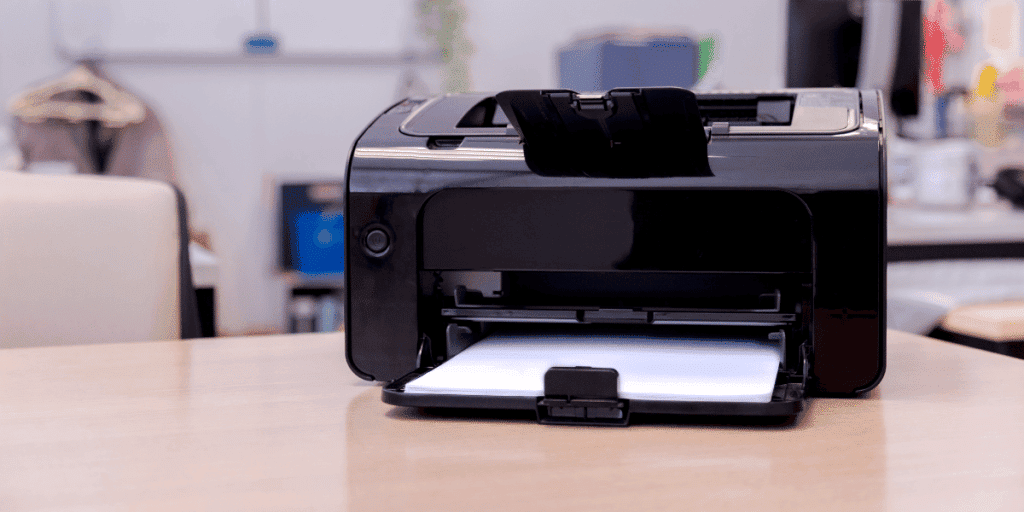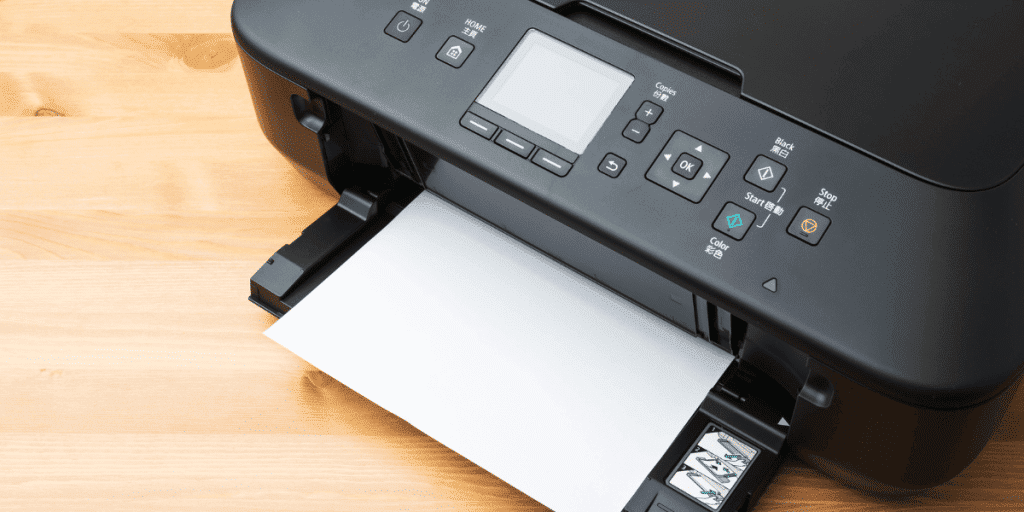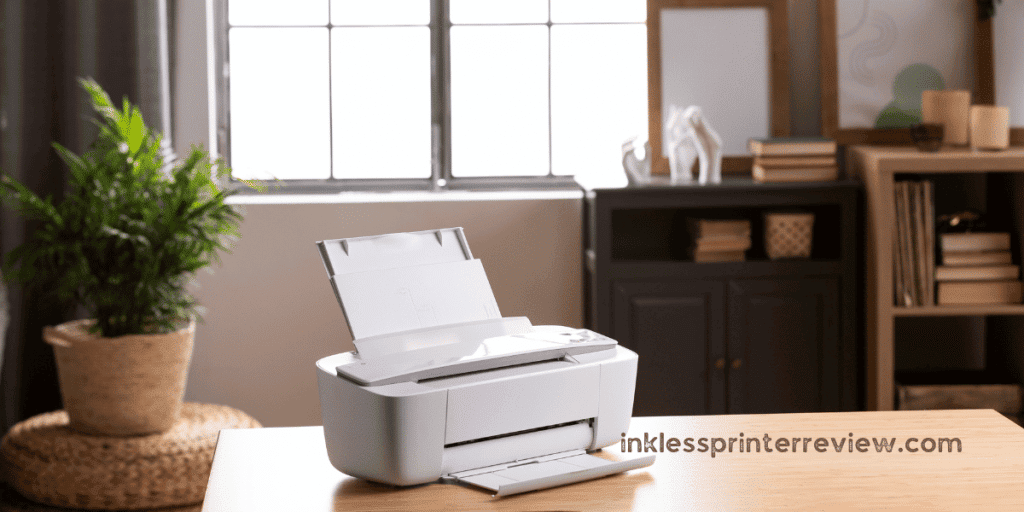Are you looking for a crisp, quality digital transfer print? Ready to make the switch to DTF printing? Then you’ve come to the right place.
From understanding the types of DTF ink and transfer films to the best printers for the job, we’ll guide you through the process.
So, buckle up and prepare to plunge into the world of DTF printing.
Let’s get started!
Key Takeaways
- Ink Compatibility: DTF printing requires specialized inks designed for transfer films.
- Printer modification: Converting printers to DTF requires technical modifications.
- Learning curve: DTF printing requires mastering workflow, color management, and maintenance.
- Limited availability: Supplies and support for DTF printing may be limited.

Overview of DTF Printing
You can convert certain Epson desktop inkjet printers into DTF printers for cost-effective, high-quality prints with versatility. Still, you must consider ink compatibility, printer modification, and other factors.
Direct-to-film (DTF) printing applies ink to a transfer film and then heat-presses the film onto a substrate. It offers many benefits, like vivid colors, fine details, shorter turnaround times, and the ability to print on various substrates like fabrics, ceramics, plastics, and metal.
However, the process requires specialized inks, transfer films, and technical modifications to the printer, like installing firmware and a specialized ink system. Additionally, you need a heat press machine and a sublimation printer.
DTF printing comes with a learning curve and requires mastering workflow, color management, and maintenance, so it’s important to research before investing.
Challenges and Drawbacks of Converting Printers to DTF
Before investing, understanding the challenges and drawbacks of converting printers to DTF is essential. Converting printers to DTF requires technical modifications and specialized inks, and the learning curve for mastering color management and maintenance can be steep. Additionally, supplies and support for DTF printing may be limited, and the initial investment can be costly. Not all substrates suit DTF transfers; some may not withstand heat or washing. Printer trays may also need to be reconfigured to accommodate special films.
Despite the challenges, there are some significant benefits to DTF printing. It’s versatile and can print on fabrics, ceramics, plastics, and metal. Efficient ink usage results in high-quality prints with vivid colors and fine details at reduced cost. Moreover, turnaround times are faster due to eliminating drying and setup time.
When selecting a suitable printer for DTF, it’s important to consider the type of ink and films needed. Water-based DTF inks require special transfer films with a sticky surface, while solvent-based inks require films with a release coating. PET and PVC films are popular choices for transfer films and provide different levels of clarity and resolution. Epson Eco Tank ET 8500, Epson Ecotank 5880, and Epson SureColor T3270 are all suitable for DTF conversion.
Benefits of Converting Printers to DTF
Converting your printer to DTF offers many benefits, such as versatility and high-quality prints. With DTF printing, you can print on various substrates like fabrics, ceramics, plastics, and metal with vivid colors and fine details. Additionally, DTF printing reduces the need for costly screens and ink usage and eliminates drying and setup time.
| Benefits | Drawbacks | |
|---|---|---|
| Versatility | Print on various substrates | Ink Compatibility |
| High-Quality Prints | Vivid colors and fine details | Printer Modification |
| Cost-Effectiveness | Reduce the need for costly screens | Learning Curve |
| Faster Turnaround | Eliminate drying and setup time | Limited Availability |
You’ll need an Epson desktop inkjet printer and specialized firmware, ink system, and RIP software to convert your printer to DTF. You’ll also need to purchase specialized inks designed for transfer films and coat transfer films with adhesive powder or spray. Water-based DTF ink is easy to work with and provides good color saturation, while solvent-based DTF ink is more durable and can withstand washing and drying better. Popular choices for transfer films include PET and PVC films. The Epson Eco Tank ET 8500, Epson Ecotank 5880, and Epson SureColor T3270 are all suitable for DTF conversion.
- Editors Choice
- Best Seller
- Amazon Choice
Step-by-step DTF Conversion Guide
Want to convert your printer to DTF? Here’s a step-by-step guide to get you started:
- Select a suitable printer.
- Install specialized firmware.
- Set up a specialized ink system.
- Use specialized software to control the printing process.
- Coat transfer films with adhesive powder or spray.
Let’s get started!
Printer Selection
Choosing the right printer is key to successfully converting it to a DTF printer, so select one that meets your needs. Opt for an Epson desktop inkjet printer, best suited for DTF printing.
Additionally, you need to install specialized firmware, ink system, and RIP software for printing.
The transfer films should be coated with adhesive powder for heat transfer.
Also, consider the type of materials you plan to print on, such as textiles, ceramics, plastics, and metal, and pick the right digital printer accordingly.
Firmware Installation
Once you select a suitable printer, you must install specialized firmware to complete the DTF conversion process.
For the Epson Surecolor series, you’ll need to upgrade to the latest firmware and install the DTF-specific firmware.
You’ll need to install the DTF-specific firmware for the Epson ECOTANK Pro ET and Epson ECOTANK Photo ET series.
You’ll need to install the DTF-specific firmware
for the Epson L series and upgrade to the latest firmware.
Lastly, you’ll need to install the DTF-specific firmware for the Epson R series and upgrade to the latest firmware.
Installing the firmware is relatively easy, and most printers come with instructions.
After the firmware is installed, you can start printing your transfer films.
- Editors Choice
- Best Seller
- Amazon Choice
Ink System Setup
Setting up a specialized ink system is essential to your DTF conversion process. It requires an initial investment for the type of ink and transfer film that suits your printing needs.
The type of ink depends on the durability and longevity of the print, while the type of transfer film is based on the substrate type and resolution of the print. Water-based ink is easy to work with and offers good color saturation, while solvent-based ink is more durable and can withstand washing and drying better.
Connectivity options are also important to ensure the printer can communicate with the RIP software.
PET and PVC films are the most common types of transfer film used in DTF printing. They offer clarity, flexibility, and durability, but PVC film is more affordable than PET film.
RIP Software Setup
Once you’ve installed the specialized ink system, you’ll need to select a suitable RIP software for your DTF conversion. Look for software that can handle fabric printing, reproduce high-resolution images, and accurately render colors. Step-by-step instructions and tutorials help you get started.
| Fabric | Image | Software |
|---|---|---|
| ✔️ | ✔️ | ✔️ |
| ✔️ | ✔️ | ✔️ |
| ✔️ | ✔️ | ✔️ |
| ✔️ | ✔️ | ✔️ |
RIP software is designed to simplify the print process, allowing you to get consistent results every time. It can also help you save time and money by optimizing printing and reducing ink usage. Thoroughly research your options and choose the right software for your needs.
Transfer Film Prep
After installing the specialized ink system, you must prepare the transfer film by coating it with adhesive powder or spray. This is an important step for successful DTF transfers.
Here’s a list of items you’ll need:
- Transfer film: PET or PVC film is usually used for DTF printing.
- Adhesive powder or spray: Hot-melt powder or hot-melt spray is recommended.
- Melted powder: This creates a smooth coating on the transfer film.
- Heat press machine: This is required to press the transfer film onto the substrate.
Preparing the transfer film correctly is key for successful DTF transfers. Ensure you use the right adhesive powder and melted powder to ensure a high-quality print. Be sure to use a heat press machine to press the transfer film onto the substrate for a long-lasting print.
Types of DTF Ink and Transfer Film
You must choose the right DTF ink and transfer film for your printer conversion. For example, a water-based ink with a PET film or a solvent-based ink with a PVC film.
Water-based inks are easy to work with and provide good color saturation. However, you’ll need a special transfer film with a sticky surface.
On the other hand, solvent-based inks are more durable and can resist washing and drying better than water-based inks. The transfer film used for this type of ink should have a release coating.
PET films are commonly used for DTF printing, offering high resolution, clarity, flexibility, and durability. PVC films are more affordable but may have lower clarity and resolution than PET films.
When selecting a printer for a DTF conversion, it’s important to choose a desktop inkjet printer suitable for DTF printing. Some recommended options include the Epson Eco Tank ET 8500, Epson Ecotank 5880, or the Epson SureColor T3270.
With the right type of ink and transfer film, you can achieve high-quality prints for your screen printing, colored pigment, and heat presses with your DTF printer.
Best Printers for DTF Conversion
Are you looking for the best printers for DTF conversion? Look no further than the Epson Eco Tank ET 8500, the Epson Ecotank 5880, and the Epson SureColor T3270!
These printers are great for achieving high-quality DTF prints and offer a variety of features for your needs.
Epson Eco Tank ET 8500
As you convert your Epson Eco Tank ET 8500 printer to DTF, you must ensure it’s compatible with specialized inks and transfer films. It offers cartridge-free printing, high-accuracy printhead, and vibrant colors.
For best results, use a rotary heat press or a flatbed heat press. This printer is also compatible with the Epson EcoTank Pro ET-16600 and Epson EcoTank Photo ET-16600, offering Air Print capabilities.
These features allow you to create high-quality prints with fine details and vivid colors.
Epson Ecotank 5880
Your Epson Ecotank 5880 is perfect for DTF conversion, with its powerful performance and compatibility with pigment-based inks and refillable ink tank system.
It’s a great choice for those looking to convert their inkjet printer for DTF transfers.
It’s also capable of printing with textile inks, allowing for high-quality prints on fabric while delivering excellent performance.
The Epson Ecotank 5880 is a reliable choice for those looking to convert their printer for DTF transfers.
Epson SureColor T3270
If you’re looking for a reliable printer to convert for DTF transfer, the Epson SureColor T3270 is an excellent choice. It provides high-quality prints and supports various ink types. This cost-effective option is perfect for flatbed heat and anti-sublimation hot melt powder applications.
Benefits include:
- Vivid colors and fine details.
- Compatible with various substrates like fabrics, ceramics, plastics, and metal.
- Reduced need for costly screens and ink usage.
- Eliminates drying and setup time.
Overall, the Epson SureColor T3270 is an ideal choice for DTF transfers. It offers a cost-effective solution and superior print quality.
Considerations When Choosing a Printer for DTF
When choosing a printer for DTF printing, you’ll need to consider factors such as ink compatibility, printer modification, cost, and the type of transfer film you plan to use. To make the best choice, consider these factors and the type of printing technology you seek.
| Type | Printing Technology | Material | Substrates | Adhesive Powder |
|---|---|---|---|---|
| Water | Inkjet | PET | Fabrics | Yes |
| Solvent | Inkjet | PVC | Ceramics | No |
Water-based DTF ink is easy to work with and provides good color saturation. It requires a special type of transfer film with a sticky surface, such as PET film, which offers high resolution, clarity, flexibility, and durability. Solvent-based DTF ink is more durable and requires a special transfer film with a release coating, such as PVC film, which is more affordable but may have lower clarity and resolution.
Epson Eco Tank ET 8500, Epson Ecotank 5880, and Epson SureColor T3270 are good options for DTF conversion. They all offer cartridge-free printing, high-accuracy printheads, and vibrant colors. Whichever printer you choose, install specialized firmware, ink system, and RIP software to maximize your printing results.

Tips for DTF Printing Success
To succeed with DTF printing, you must familiarize yourself with the workflow, color management, and maintenance procedures.
Here are some tips for success:
- Choose the right printer: An Epson desktop inkjet printer is suitable for DTF printing. Make sure to install specialized firmware, ink system, and RIP software.
- Prepare transfer films: Coat transfer films with adhesive powder or spray to avoid excess powder buildup.
- Select the right inks: Depending on the substrate, choose water-based or solvent-based DTF inks. PET or PVC films are commonly used for transfer films.
- Use cartridges: Use cartridges to reduce ink usage and ensure a vibrant print.
DTF printing can print on fabrics, ceramics, plastics, and metal.
Conclusion
Converting a printer to a DTF system may seem daunting at first, but with a little research and the right equipment, you can be well on your way to creating beautiful prints.
By understanding the types of DTF ink and transfer films available, selecting the best printer for your needs, and following the step-by-step guide, you can take your printing to the next level.
So, what’re you waiting for? Start exploring the world of DTF printing today and see what it can do for you!










